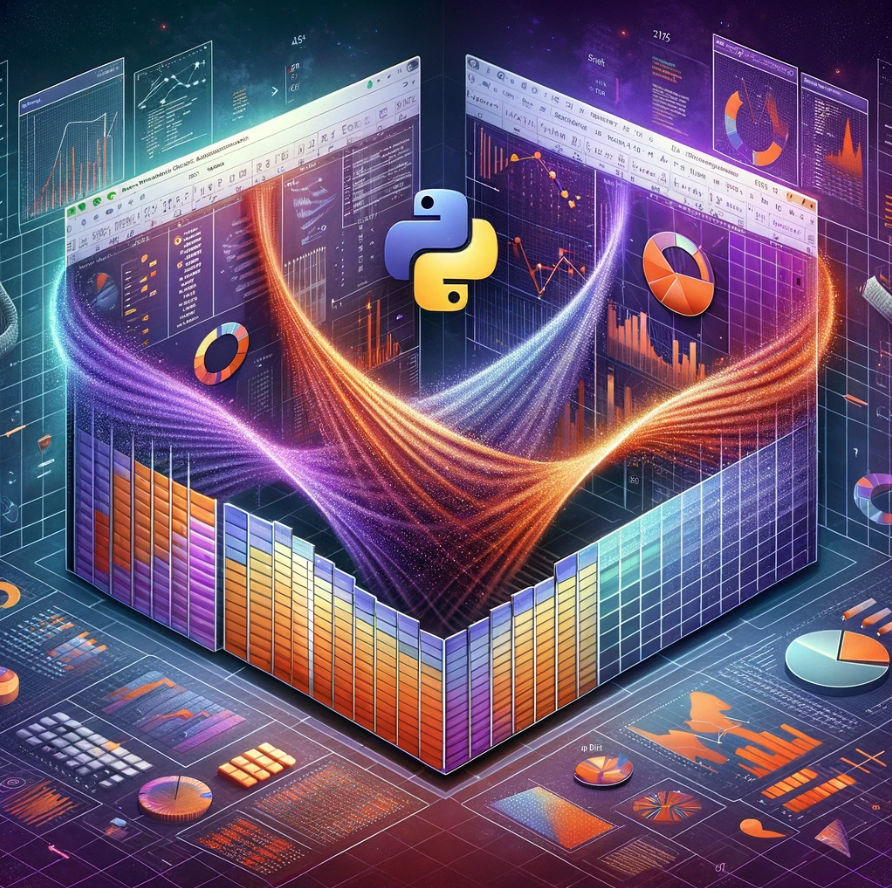Optimizing Inventory with Excel: A Deep Dive into EOQ and Reorder Point Formulas
In the dynamic world of business operations, inventory management stands as a critical pillar ensuring efficiency, cost reduction, and service quality. For many organizations, the challenge of balancing stock levels to meet demand without incurring unnecessary costs can seem daunting.
Excel's Statistical Might: Advanced Techniques with Descriptive Statistics
In the vast ocean of data that businesses navigate daily, the ability to analyze and interpret this data efficiently can set a company apart from its competitors. Excel, a staple in the tech toolbelt of professionals across industries, offers a robust suite of features to harness this power.
Python-Powered Excel: Automate Like a Pro
Enter Python, a dynamic and powerful scripting language, which, when paired with Excel, unlocks a realm of automation possibilities hitherto unimagined. Inspired by insights from Post 16 and Post 20, this blog post explores how Python can be harnessed to perform complex tasks in Excel effortlessly, transforming routine data manipulation into a streamlined, efficient process.
One-Click Forecasts: Excel's AI Wizardry
In today’s rapidly evolving business landscape, the ability to predict future trends and outcomes has never been more crucial. Forecasting, a mainstay in the arsenal of business tools, has undergone a transformative shift with the advent of artificial intelligence (AI).
Exceptional Excel: Python's Error Handling for Flawless Spreadsheets
At its essence, Python's error handling revolves around the try-except block, a simple yet profound structure designed to catch and manage exceptions—unforeseen errors that can disrupt your program's flow.
Python's Decorators: Excel Task Automation Magic
Imagine for a moment a function in Python as a cog in a larger machine. This cog performs its duty well but imagine if we could enhance its functionality without altering its essence. This is where decorators come into play. Decorators in Python can be thought of as wrappers that you put around your functions, giving them additional capabilities without modifying their core logic.
Beyond the Spreadsheet: Excel as a Database with Python Integration
At first glance, Excel might not seem like the ideal candidate for database operations, especially when compared to traditional databases like SQL. However, its accessibility, ease of use, and widespread adoption make it an invaluable resource for small-scale projects and data management tasks. Excel's ability to store, organize, and manipulate data, coupled with its user-friendly interface, allows for database-like operations without the steep learning curve of more complex database systems.
Excel Meets Data Science: Advanced Analytics with Python's SciPy and Excel
The amalgamation of Python and Excel for data science endeavors offers a unique blend of simplicity and power. Python, with its extensive ecosystem of libraries, excels at performing complex statistical analyses, data manipulation, and machine learning. Excel, on the other hand, is unparalleled in data organization, visualization, and its user-friendly interface, making it a favorite among professionals across various industries.
Unlocking Big Data in Excel: Utilizing Dask and Pandas for Large Datasets
The advent of big data has revolutionized the way we analyze information, demanding more from our tools and technologies. Excel, a stalwart in data management and analysis, finds itself at a crossroads, challenged by the sheer volume and complexity of big data. Enter Dask and Pandas, two Python libraries designed to bridge this gap, offering robust solutions for handling and analyzing large datasets within Excel. This post delves into the integration of these tools with Excel, promising to unlock new realms of possibilities for big data enthusiasts.
The Visual Spreadsheet: Creating Interactive Excel Reports with Plotly and Python
Excel has long been the standard for organizing and analyzing data across industries. However, the built-in charting capabilities often fall short when tasked with representing complex datasets or conveying nuanced insights. Static charts can only go so far in engaging stakeholders and facilitating data-driven decision-making. Interactive visualizations, on the other hand, invite exploration, allowing users to uncover patterns and insights at their own pace.
Excel and REST APIs: Automating Real-Time Data Feeds with Python
At the heart of this transformation is the REST API (Representational State Transfer Application Programming Interface), a standard web protocol that enables communication between systems on the internet. REST APIs serve as conduits, allowing applications to fetch data from external sources in a structured format, typically JSON or XML. This capability is crucial for accessing live data streams—whether it's the latest stock prices, weather updates, or social media trends—and integrating them into our Excel dashboards.
Seamless Data Transformation: Streamlining ETL Processes with Excel and Python
In the realm of data analytics, the process of extracting, transforming, and loading data (ETL) forms the backbone of effective data management and analysis.
Advanced Excel Charting Techniques for Compelling Data Storytelling
Data storytelling transcends mere presentation, crafting narratives that resonate with audiences and drive strategic decision-making. At the heart of this art lies the mastery of Excel's advanced charting techniques, a skill that transforms raw numbers into compelling visual narratives.
Harnessing the Power of Excel Macros in Financial Modeling
Among Excel's most potent features for enhancing these models are macros, automated sequences that can perform tasks within Excel. This guide delves into the strategic use of Excel macros in financial modeling, offering insights into recording and writing VBA code to automate complex calculations and simulations, alongside best practices for debugging and optimizing macro performance.
Excel and Power Automate: Streamlining Your Workflow
Excel has long been the go-to tool for data analysis, financial modeling, and complex calculations. When paired with Microsoft Power Automate, its capabilities are significantly expanded, transforming static spreadsheets into dynamic engines that can interact with other applications, trigger actions based on data events, and automate tasks that traditionally require manual input.
Navigating Excel's Forecasting Tools - A Predictive Pathway for Businesses
At the heart of Excel's utility for businesses is its suite of forecasting functions, designed to predict future trends based on historical data. Notably, functions such as FORECAST.LINEAR and FORECAST.ETS stand at the forefront, enabling users to project future values in linear or seasonal trends, respectively. These tools are particularly adept at handling time-series data, where predictions are based on time as the primary variable.
Harnessing Excel and Python for Real-Time Data Analysis and Reporting
In the era of digital transformation, the need for dynamic data analysis and reporting cannot be overstated. Organizations and individuals alike strive to make informed decisions based on the latest information. This urgency has propelled the integration of two powerful tools in the realm of data science: Excel and Python.
Excel Meets Machine Learning: Predictive Modeling in Spreadsheets
The fusion of Excel and machine learning represents a groundbreaking advancement in the realm of data analysis and decision-making. For decades, Excel has been the go-to tool for crunching numbers, organizing data, and performing complex calculations.
Custom Excel Functions with Python: Extending Spreadsheet Capabilities
Microsoft Excel has been the cornerstone of data analysis, financial modeling, and many other business processes for decades. Its comprehensive set of built-in functions and formulas covers a wide range of needs, from simple arithmetic calculations to complex statistical analyses.
Automating Financial Scenarios with Excel and Python
In the fast-paced world of finance, the ability to swiftly analyze various financial scenarios can be the difference between outperforming the market and missing a critical opportunity.




















